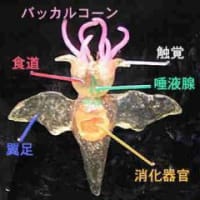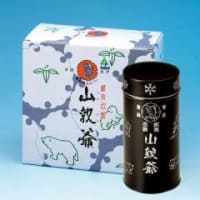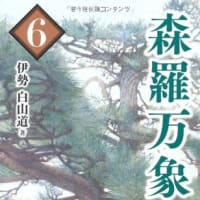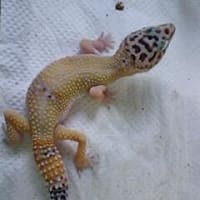

…
Varanidae - Wikipedia, the free
http://en.m.wikipedia.org/wiki/Varanidae
Varanidae
Varanidae
Varanus albigularis
Scientific classification
Kingdom: Animalia
Phylum: Chordata
Class: Sauropsida
Order: Squamata
Suborder: Lacertilia
Infraorder: Anguimorpha
Superfamily: Varanoidea
Family: Varanidae
Merrem, 1820
Genera
†Cherminotus
†Iberovaranus
†Pachyvaranus
†Palaeosaniwa
†Saniwides
†Telmasaurus
Varanus
The extinct Saniwa feisti
The Varanidae are a family of lizards of the superfamily Varanoidea. The family, a group of carnivorous lizards, includes the largest living lizard, the komodo dragon, and the crocodile monitor. Varanidae contain the living genus Varanus and a number of extinct taxa. Their closest living relatives are the anguid and helodermatid lizards.[1]
Biology
Monitor lizards are reputed to be among the most intelligent lizards. Most species forage widely and have large home ranges,[2] and many have high stamina.[3] Although carnivorous, at least one species (Varanus olivaceus) is known to consume fruit.[4] Among species of living varanids, the limbs show positive allometry, being larger in larger-bodied species, although the feet become smaller as compared with the lengths of the other limb segments.[5]
References
^ Fry, B.G.; Vidal, N; Norman J.A.; Vonk F.J.; Scheib, H.; Ramjan S.F.R; Kuruppu S.; Fung, K.; Hedges, B.; Richardson M.K.; Hodgson, W.C.; Ignjatovic, V.; Summerhays, R.; Kochva, E. (February 2006). "Early evolution of the venom system in lizards and snakes" (PDF). Nature 439 (7076): 584588. doi:10.1038/nature04328. PMID16292255.
^ Perry, G.; Garland, T., Jr. (2002). "Lizard home ranges revisited: effects of sex, body size, diet, habitat, and phylogeny" (]). Ecology 83 (7): 18701885. doi:10.1890/0012-9658(2002)083[1870:LHRREO]2.0.CO;2.
^ Clemente, C.J.; Withers, P.C.; Thompson, G.G. (2009). "Metabolic rate and endurance capacity in Australian varanid lizards (Squamata; Varanidae; Varanus)" (]). Biological Journal of the Linnean Society 97 (3): 664676. doi:10.1111/j.1095-8312.2009.01207.x.
^ Auffenberg, W. (1988). Gray's monitor lizard. Gainesville: Univ. Florida Press. pp.419 pp.
^ Christian, A.; Garland, T., Jr. (1996). "Scaling of limb proportions in monitor lizards (Squamata: Varanidae)" (]). Journal of Herpetology 30 (2): 219230. doi:10.2307/1565513. JSTOR1565513.
External links
Varanidae
v t e
Varanoidea
Kingdom: Animalia Phylum: Chordata Class: Reptilia Order: Squamata
Extant species
Helodermatidae
Beaded lizard Gila monster
Lanthanotus
Earless monitor lizard
Varanus
Argus monitor Black tree monitor Bengal monitor Black-spotted Ridge-tailed Monitor Crocodile monitor Desert Monitor Dumeril's monitor Emerald tree monitor Gray's monitor Kalabeck's monitor Kimberley Rock Monitor Komodo dragon Lace monitor Mangrove monitor Mertens' Water Monitor Nile monitor Peacock monitor Peach Throat Monitor Perentie Rock monitor Pilbara monitor Rennell Island Monitor Rosenberg's Monitor Short-tailed monitor Spiny-tailed monitor Timor tree monitor Turquoise monitor Sand goanna Savannah monitor Water monitor Yellow Monitor
Related categories
Monitor lizards Cretaceous lizards Helodermas Mosasaurs
Fossil taxa
†Aigialosauridae
Aigialosaurus Carsosaurus Judeasaurus Kaganaias
†Dolichosauridae
Adriosaurus Dolichosaurus Acteosaurus
Helodermatidae
Estesia
†Mosasauridae
Halisaurinae Mosasaurinae Plioplatecarpinae Tylosaurinae
†Necrosauridae
Necrosaurus
Varanidae
Aiolosaurus Cherminotus Megalania Ovoo Saniwa Saniwides Varanus amnhophilis
Others
Telmasaurus Palaeosaniwa
分類
界 : 動物界 Animalia
門 : 脊索動物門 Chordata
亜門 : 脊椎動物亜門 Vertebrata
綱 : 爬虫綱 Reptilia
目 : 有鱗目 Squamata
亜目 : トカゲ亜目 Sauria/Lacertilia
生態
極地や高山を除く、陸上の様々な環境に生息する。
食性は分類、種により異なり、昆虫類、節足動物、甲殻類、貝類、ミミズ、魚類、両生類、爬虫類、鳥類、哺乳類、動物の死骸、葉、花やその蜜、果実、種子、海藻等を食べる種が知られている。
繁殖形態は主に卵生だが、卵胎生の種もいる。
人間との関係
ほとんどのトカゲは毒をもたず、よほどの大型種でもない限り人間に害を及ぼすことはないが、オオトカゲ類などに咬まれると口内にいる雑菌が傷口から入りこみ感染症を起こすことがある。実際に毒をもつのはメキシコ北部に分布するメキシコドクトカゲとテキサス南部に分布するアメリカドクトカゲ、そしてインドネシアにいるコモドオオトカゲ(詳しくはコモドオオトカゲの項を参照のこと)の3種類だが、前記2種は動きも比較的遅く、毒はヘビの毒と異なり噛むことでゆっくり注入されるため、それほど危険ではない。が、コモドオオトカゲは大きさのわりにかなり動きが早く、毒もかなり強いとのこと、現地では人間が捕食された例も少なくないという。
英語圏では男性器の隠語としてトカゲの名前が用いられることもある。「Bleeding the lizard」は「小便」「Milking the lizard」は「マスかき」を意味する。[2]
関連項目
ウィキメディア・コモンズには、トカゲに関連するカテゴリがあります。
ウィキスピーシーズにトカゲに関する情報があります。
有鱗目 (爬虫類)
自切
平成16年台風第23号 台風の国際的な呼称として「トカゲ」(直接にはとかげ座に由来)
とかげ座
出典
^ Glaw, F.; Khler, J. R.; Townsend, T. M.; Vences, M. (2012). Salamin, Nicolas. ed. “Rivaling the World's Smallest Reptiles: Discovery of Miniaturized and Microendemic New Species of Leaf Chameleons (Brookesia) from Northern Madagascar” (英語). PLoS ONE 7 (2): e31314. doi:10.1371/journal.pone.0031314.
^ スターリング・ジョンソン著・花くまゆうさく訳 第2外国語として学ぶファッキン英語2(イプシロン出版企画 ISBN 978-4-903145-35-8)84ページ
参考文献
千石正一監修 長坂拓也編 『爬虫類・両生類800種図鑑 第3版』、ピーシーズ、2002年、14-73頁。
『小学館の図鑑NEO 両生類はちゅう類』、小学館、2004年、83-109頁。
海老沼剛 『爬虫・両生類ビジュアルガイド トカゲ1 アガマ科&イグアナ科』、誠文堂新光社、2004年、4-112頁。
海老沼剛 『爬虫・両生類ビジュアルガイド トカゲ2 ヤモリ上科&スキンク上科』、誠文堂新光社、2004年、4-112頁。
Go!!Suzuki 『爬虫・両生類ビジュアルガイド オオトカゲ&ドクトカゲ』、誠文堂新光社、2006年、6-128頁。
トカゲ - Wikipedia
http://ja.m.wikipedia.org/wiki/%E3%83%88%E3%82%AB%E3%82%B2




















※コメント投稿者のブログIDはブログ作成者のみに通知されます